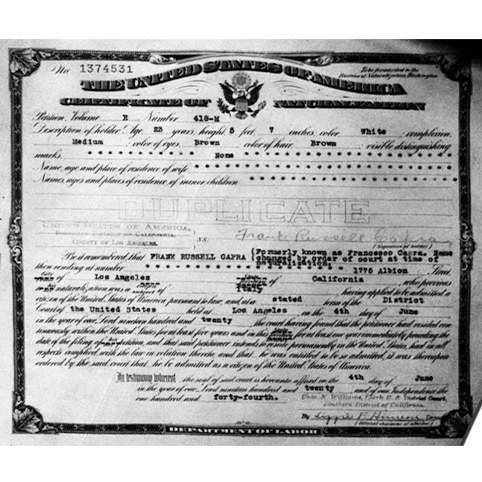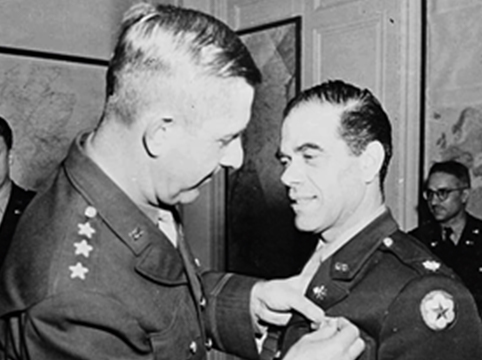Naturalized World War I Soldier Frank Capra

After the United States entered the First World War, Congress passed the Naturalization Act of May 9, 1918, to expedite naturalization for noncitizen members of the U.S. armed forces. Congress wanted to reward foreign-born service members and encourage immigrant enlistments. Eventually, hundreds of thousands of soldiers, sailors, and marines took advantage of this opportunity to become U.S. citizens under this act and subsequent legislation that extended military naturalization benefits to veterans of the war.
Among them was Francesco Capra, a young Sicilian immigrant who had arrived in the U.S. in 1903 at the age of 6. Capra’s family settled in Los Angeles, where he spent his youth before studying chemical engineering at the Throop Polytechnic Institute, the precursor to California Institute of Technology. Capra graduated in 1918, about a year after the U.S. had entered WWI, and he immediately enlisted in the Army. He spent his short career in the U.S. Army stateside, teaching math and ballistics at Fort Scott in San Francisco. After serving just five months, Capra contracted influenza during the global pandemic and received a medical discharge from the army.
Though brief, Capra’s military service qualified him to become a U.S. citizen under military naturalization provisions. Originally unsure of his citizenship status, Capra learned that he was not U.S. citizen when he first attempted to enlist in the military. He immediately filed a Declaration of Intention—commonly called “first papers”—but he did not follow-up on the declaration before he received his discharge. Two years later, on June 4, 1920, Capra filed a military petition for naturalization at the U.S. District Court in Los Angeles and became a naturalized citizen that same day. Military naturalization laws allowed ex-service members to avoid long waiting periods. At the same time that he naturalized, he officially changed his name to from Francesco to Frank.
Unable to find work in chemical engineering, Capra spent the early 1920s traveling and working temporary jobs. Eventually, he found his way into L.A.’s growing motion picture industry. Rising rapidly in the field by the 1930s, Capra became one of the nation’s preeminent movie directors. During that decade he earned the Academy Award for best director three times and directed classics such as It Happened One Night, Mr. Deeds Goes to Town, and Mr. Smith Goes to Washington.Many of Capra’s movies were idealistic, sentimental, and patriotic. His films often featured everyday characters whose common decency allowed them to overcome the turmoil of life during the Great Depression. In many ways, Capra, a naturalized Italian immigrant, made some of the most quintessentially “American” movies of the era.
In 1941, with U.S. involvement in World War II (WWII) on the horizon, Capra appeared on the Immigration and Naturalization Service (INS) sponsored radio show “I’m an American.” This show promoted naturalization, patriotism, and immigrant contributions to the U.S. The show praised the “American spirit” of Capra’s films and held him up as an immigrant success story.

Once the U.S. entered the war, Capra rejoined the army. During his second stint in the military, he produced many films in support of the American war effort, including the famous Why We Fight series. Capra served until 1945 and rose to the rank of Colonel. He received the received the Legion of Merit and the Distinguished Service Medal for his WWII service. [Full versions of Capra’s Why We Fight films are available from the National Archives YouTube channel.]
After World War II, Capra returned to directing feature films, though his work never regained the level of popularity he had achieved between the World Wars. One of his box office disappointments, however, grew much more popular over time. It’s a Wonderful Life (1946), eventually became an iconic film that defines the holiday season for many Americans and may be Capra’s most enduring contribution to American popular culture.
Along with thousands of other soldiers, Frank Capra, an immigrant whose films came to represent the American dream for millions, became a U.S. citizen under WWI’s military naturalization laws.
